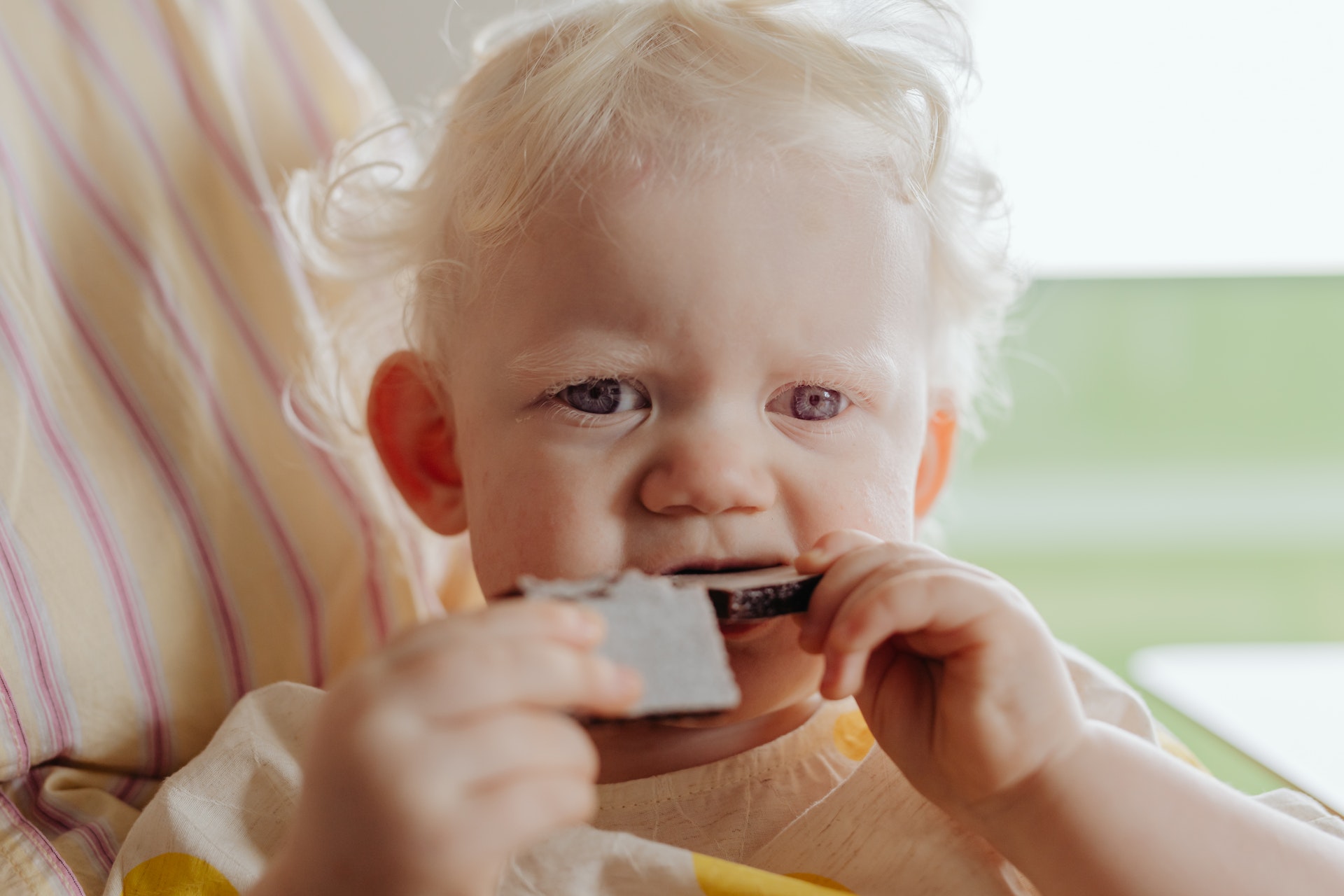10 Surprising Substances That Can Harm a Toddler
One single pill or one sip of a common liquid can be deadly for a 2-year-old.
Posted November 12, 2021 | Reviewed by Davia Sills
https://www.psychologytoday.com/us/blog/heal-the-mind-heal-the-body/202111/10-surprising-substances-can-harm-toddler
KEY POINTS
- Despite the fact that even small amounts of many substances can kill a toddler, less and less products are sold in childproof containers.
- Some of those substances can have a delayed toxic action: The toddler can seem fine the first few hours, then crashes after 8, 12 or 24 hours.
- If you have any doubt, don’t hesitate to call Poison Control and take your child to the emergency room.
One single pill, one sip, or one bite ingested by a toddler can be deadly.
Source: National Cancer Institute/Unsplash
You may think that your house is safe for a toddler, but is it?
Recently, I attended a conference by Dr. Cyrus Rangan, Director of Toxicology and Environmental Assessment for the Los Angeles County Department of Public Health. Dr. Rangan talked about 10 little-known substances that can kill a toddler. Despite being a physician myself, I was surprised by a lot of those, so I decided to write about what I learned.
Some dangerous substances like opiates are obvious, and we are not going to talk about those. We are going to talk about substances that you would never suspect could be toxic for your toddler.
Let’s take a look at what you could have in or out of your house that could be so deadly:
- Some diabetes medications
Case scenario:
Dad Todd, who is diabetic, takes a sulfonylurea medication to treat his type 2 diabetes at 6:00 a.m. every day with breakfast before going to work. On Monday morning, after a fun weekend, a not fully awake dad grabs the medication container in the kitchen, puts one pill of sulfonylurea in his mouth while eating his cereal, but doesn’t notice that one other pill of sulfonylurea falls on the floor.
At 6:15 a.m., Todd’s wife, Elsa, wakes up 20-months-old Bryan, who starts running everywhere in the apartment. At 7:00 a.m., Elsa drops off Bryan at daycare, then goes to work. Bryan plays well at daycare, but a few hours later, he becomes very fussy, profusely sweating, then lethargic. Suddenly at 3:00 p.m., Bryan starts shaking, seemingly having a seizure, then becomes unconscious. He is rushed to the emergency room. Doctors manage to save Bryan, but he could easily have died.
What happened?
Toddler Bryan had just started walking and loved exploring everything. Bryan found the sulfonylurea pill on the kitchen floor around 6:30 a.m., grabbed it, put it in his mouth, like he does with pretty much everything he finds, and swallowed it. The sulfonylurea drug stimulated his pancreas to release insulin to lower his blood sugar (which works wonderfully for diabetic dad, but not for toddler Bryan, whose blood sugar is normal to start with).
The drug worked slowly over a few hours, first dropping Bryan’s blood sugar into low levels making him fussy, and then a few hours later, dropping his blood sugar into dangerously lower levels, making Bryan very agitated, profusely sweaty, and dizzy. Later, Bryan’s brain was desperately needing sugar to function normally but couldn’t find enough in Bryans’ blood. Bryan became very lethargic, had a seizure, and then became comatose and was close to dying. Had Bryan not been found in time and had he not been transported urgently to the Emergency Room, Bryan could have died after ingesting only one pill of sulfonylurea.
How could this have been prevented?
Dad Todd should have been more careful with his pills, keeping his pills in a childproof container and making sure that no pill gets within reach of his toddler.
Some parents might notice that their toddler swallowed one pill and will monitor their toddler for an hour after the ingestion. When parents see that the toddler is still fine after an hour or two, they don’t worry anymore. That is a mistake. They should worry, call a poison center, and possibly take their toddler to the emergency room even if the kid is still fine.
Why is that?
Because a sulfonylurea drug will have a delayed effect, and it could take 8 hours, as in Bryan’s case, but also sometimes up to 12 or 24 hours before the toddler collapses. Those hours should be spent in the emergency room where the toddler’s blood sugar can be monitored and treatment can be started.
Sulfonylureas drugs for diabetes are not the only drugs that can kill a toddler with only one pill and with a delayed reaction.
- Some heart and blood pressure medications
Drugs of the class of beta-blockers and also calcium channel blockers are used to treat adults with high blood pressure or heart problems and can also kill a toddler with only one pill. These types of medications can also have a delayed reaction.
The beginning of a scenario could be similar to the diabetes medication, with the child having no problem at first, then suddenly having cardiac problems, seizures, going unconscious, and being at risk of dying.
- Liquid nicotine
Liquid nicotine or “smoke juice” is a poison if swallowed. But it has attractive flavors like peach, blueberry, watermelon, strawberry, etc., which can be very tasty for a toddler. Those liquid nicotine vials can contain up to 70 mg of nicotine, and unfortunately, only 20 mg could be enough to kill a toddler.
If the toddler drinks one vial of liquid nicotine, the first stimulation phase will give him a rapid heart rate, nausea, abdominal pain, and seizures, followed by a depression phase that will trigger a slow heart rate and coma.
- Topicals containing methyl salicylate
An example of a product that contains methyl salicylate is Oil of Wintergreen, which is present in many over-the-counter topical products used to treat muscle and joint aches. This substance is made to be applied on the skin and not to be swallowed. Unfortunately, they are usually not in a childproof container. If swallowed by a toddler, even a small dose of the methyl salicylate product could make your toddler’s blood too acidic, leading to brain swelling, coma, and possible death.
- Laundry and dishwasher pods
Those have exciting inviting colors, but they are highly concentrated, caustic, and neurotoxic chemicals. Only one pod ingested by a toddler can be so neurotoxic that the toddler could stop breathing after a few hours. So, if your 1-year-old child has ingested one of those pods, take your child right away to the emergency room for 24-hour monitoring.
- Home-preserved and home-fermented vegetables, fruits, or meats
Home-fermented vegetables, fruits, or meats could easily be contaminated with spores of a bacteria called Clostridium Botulinum, which are often present in the dirt, and which secrete a neurotoxin.
If your toddler eats some of those contaminated home-fermented vegetables, fruits, or meats (which haven’t been sterilized by any process that kills Clostridium Botulinum spores), your toddler might become weak, have a slower than normal heart rate, dilated pupils, and then could become paralyzed.
The kind of paralysis triggered by Clostridium Botulinum is called “flaccid paralysis” and can lead to death. Your toddler’s limbs will be soft, and if you lift your toddler up, his or her limbs will be swinging in the air like a soft doll. The first sign of flaccid paralysis can be constipation.
- Honey
It is recommended not to give honey to less-than-12-months-old infants because those young infants don’t have enough acid in their stomach to destroy Clostridium Botulinum spores, which could be present in small quantities in honey and which may germinate in their GI tract. So, the previous scenario of flaccid paralysis could come from honey, which has been proven to be the origin of 15 percent of infant botulism.
- Wild deadly mushrooms
The most deadly mushroom, called Amanita Phalloides, is widely seen in Northern America, including Northern and Central California. It could only take one bite of that mushroom for your toddler to die. What is interesting about the Amanita Phalloides is that your toddler will initially have no symptoms, no vomiting or diarrhea after the ingestion (unlike with other less deadly mushrooms); then, 6 to 10 hours after the ingestion, your toddler could become jaundiced and die because of liver failure.
- Antifreeze that could be found in your garage
Antifreeze contains ethylene glycol, a very toxic substance. If only a small quantity of antifreeze is ingested by your toddler, it could give your toddler acute kidney failure, which could lead to death.
- Camphor oil
Camphor oil is used by adults to treat inflammation of joints or skin and also to decrease chest congestion. Camphor oil should always be used on the skin and never be ingested. If your toddler ingests some Vicks Vaporub (which contains camphor oil), for example, within 30 minutes of ingesting this camphor product, your toddler could have seizures and stop breathing.
There are other substances that could be deadly for toddlers even if a very small dose is swallowed, but here we just selected a few lesser-known ones.
What to do to prevent your toddler from ingesting all of those deadly substances:
First, know which substances can be deadly (even in small quantities) if ingested by a toddler.

Author & Speaker: Chris Gilbert, M.D., Ph.D.
Author of “The Listening Cure” (SelectBooks 2017)







